QNAP TVS-h874 Internal Hardware Overview
Pulling out the drive trays, we can see the backplane and cooling.
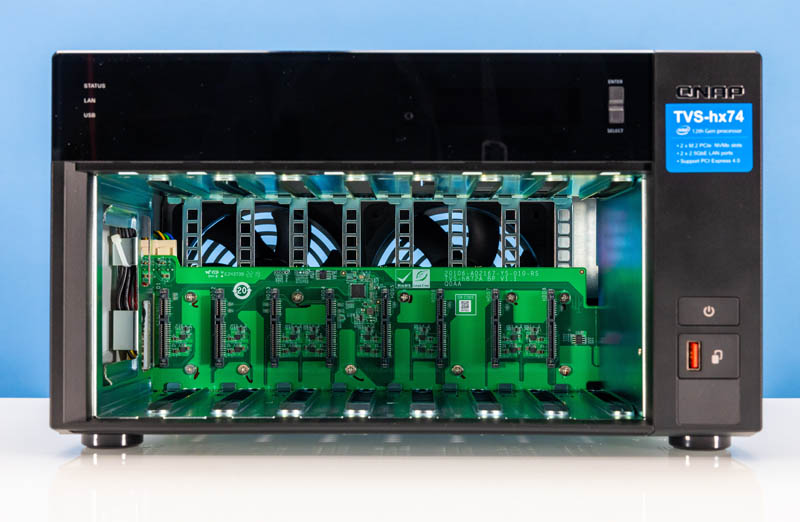
Here is a closer look at this area. We have power coming in on the left hand side then the PCB for the 8x SATA hot-swap bays. the motherboard is to the right. Behind this PCB, we see large exhaust fans.
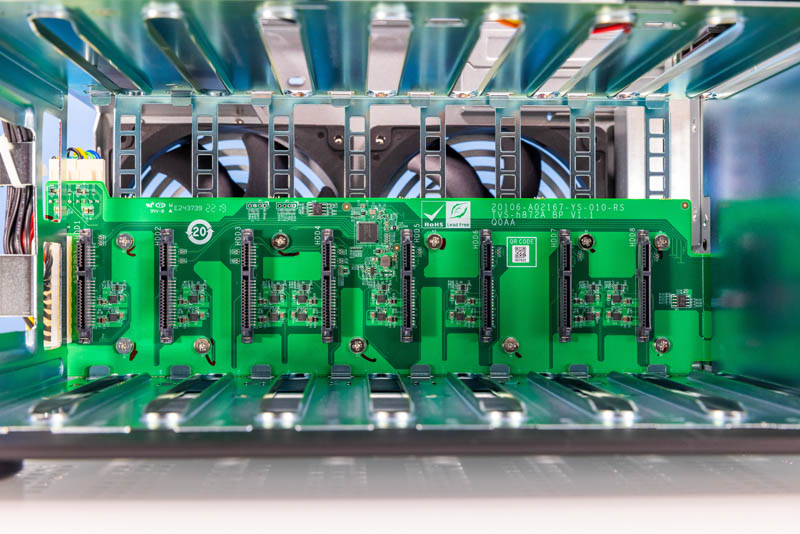
Here is the unit with the top and sides off as well.
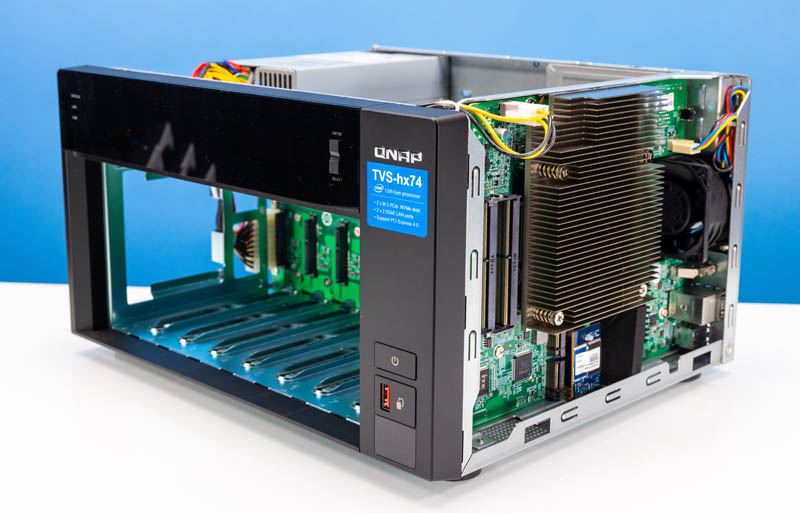
Looking down on the unit from the top, we can see the fans in this photo on the top, the power supply to the left. To the right, there are the PCIe expansion slots and then we can see the CPU heatsink on the far right.
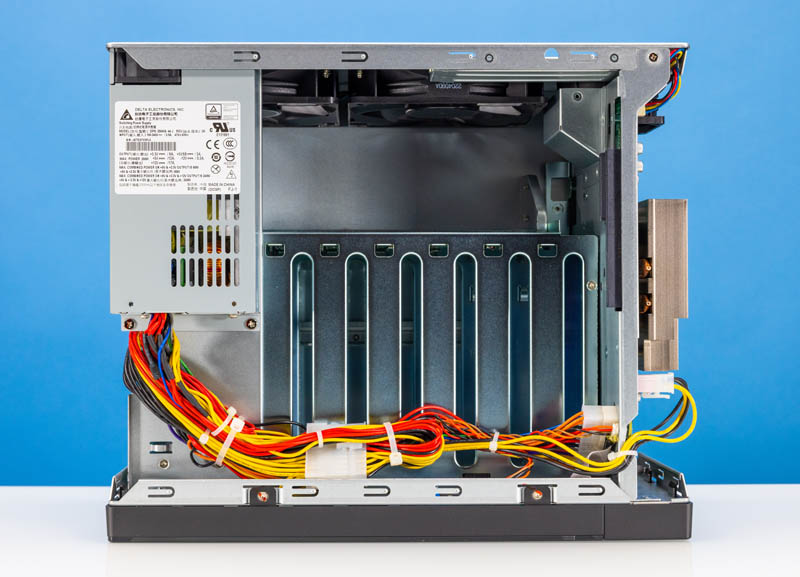
The PSU is a 250W Delta unit.
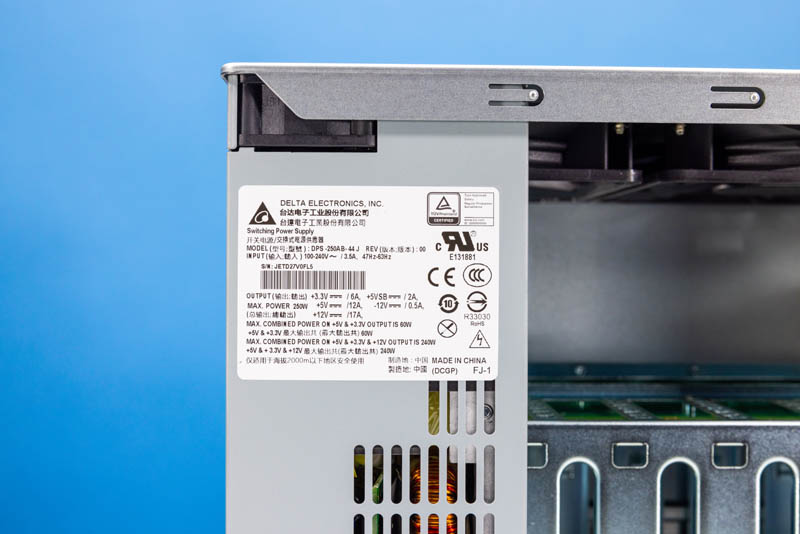
Here is the PSU side of the chassis. Something very interesting that QNAP does in its units is that the ATX 24-pin style power supply goes into the hot-swap SATA backplane. Another item to note is just how much empty room there is in the chassis.
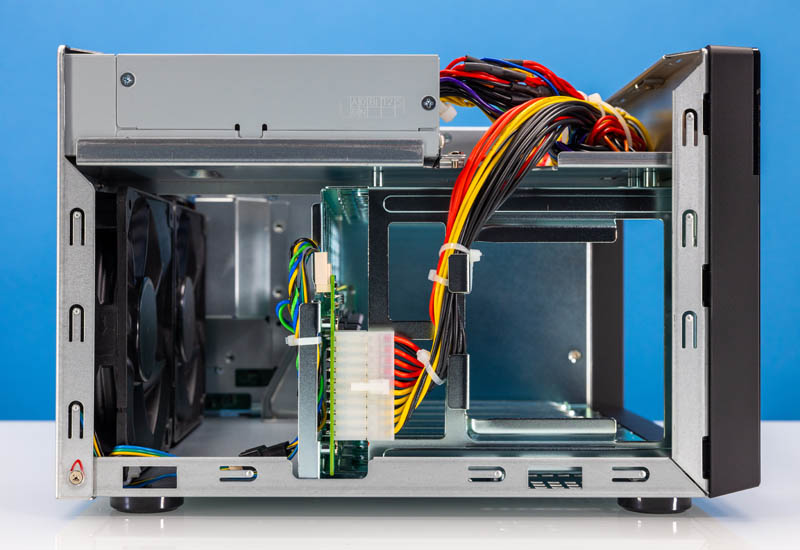
Looking a the motherboard side, we have the large heatsink with the Intel Core i5-12400 6 core / 12 thread processor. The Core i5-12400 is a P-core only Alder Lake generation SKU.
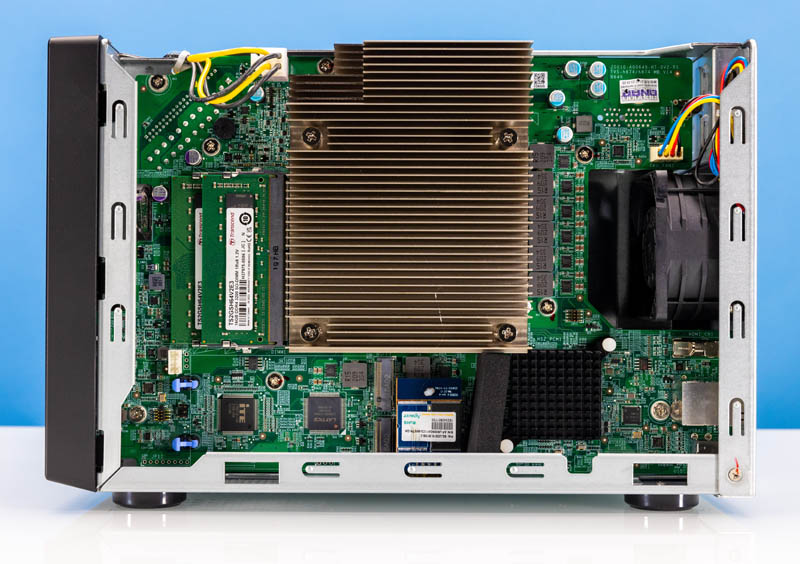
Memory is 32GB via two DDR4-3200 SODIMMs. We wish that QNAP used ECC memory since that is an option now with Alder Lake series processors with a matching chipset. Especially as a ZFS NAS, we would have liked to have ECC here. If one wants, it is very easy to swap in 64GB of memory.
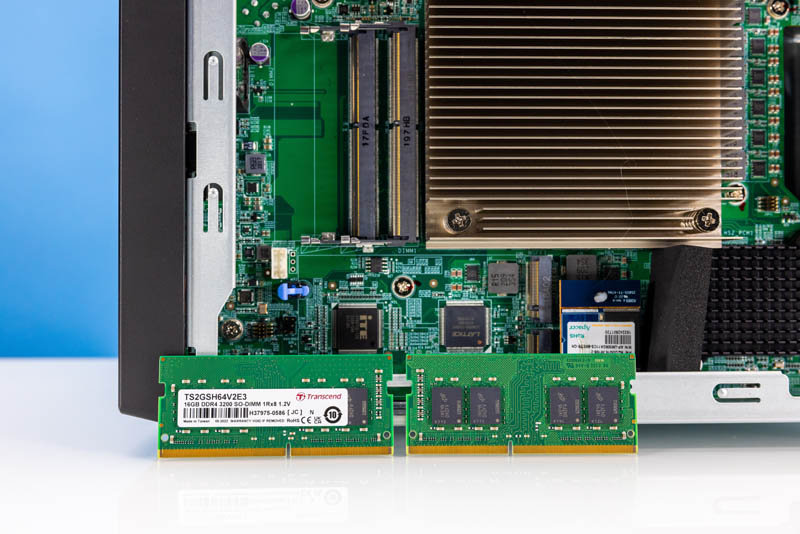
The bottom of the unit has two M.2 slots along with the Apacer 5GB DOM that is used to boot the OS.
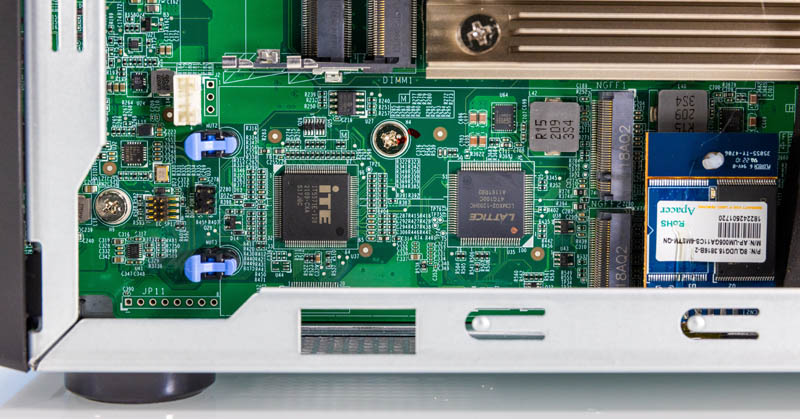
Next, let us get to management and performance.



The review starts out saying “a ZFS NAS that is more exciting than we first expected” but somehow while reading I missed what was exciting. Was the exciting part lower power consumption and less noise than expected?
Lack of ECC memory is a show stopper in my opinion. Thanks for pointing this out. As far as I can tell the additional consistency checks in ZFS fail to reach typical ZFS levels of data safety without ECC. Is there an ECC option?
In my experience the difficulty with ready-made NAS devices is insecure software while finding a nice chassis with suitable drive bays is a problem for do it yourself.
Could this NAS hardware boot standard Linux or FreeBSD, not in a VM but on the bare metal? Testing such a capability would be a nice addition to the review.
Your analysis suggests that we can add ECC memory and that it will work. False!! It has been confirmed by Qnap that they have chosen to use a chipset not compatible with ECC even if the processor supports it. For reasons of economy? One thing is for sure is that there is a risk of data corruption using non-ECC memory with a ZFS system!!
The other thing you need to know is that Qnap have put a big power connector in line with the PCI slots. This poorly positioned connector prevents the use of cards with a very limited length. For example, an Nvidia P2000 or P2200 GPU card will not fit in this NAS. A QM2-4P-384 card will not fit either!!! Qnap has botched details!!
That motherboard is QNAP’s design so if they wanted ECC all they had to do was use the W680 and ECC SODIMMs.
Saying there’s a risk of data corruption using non-ECC memory with ZFS is disingenuous at best. If you use non-ECC memory, then ZFS is still better than most other filesystems because it will still detect bit flips and in some cases be able to repair them (e.g. from parity or mirror data). It is, after all, designed to detect bit flips on the disk and its controller, so if the bit flip happens in memory instead (after the data arrives from the disk) it’s no different to what ZFS was designed to handle.
There’s only a small set of scenarios where non-ECC memory will cause problems, and these affect all filesystems, not just ZFS.
There’s a good summary of the protections offered by ZFS on this post by Jim Salter, a renowned expert on ZFS: https://jrs-s.net/2015/02/03/will-zfs-and-non-ecc-ram-kill-your-data/
It gives some examples of how ECC memory certainly makes things more reliable, but it’s by no means mandatory for ZFS.
Not that I’m defending QNAP here of course. The cost for supporting ECC is so small it makes little sense to exclude it, but apparently we can thank Intel for that: https://arstechnica.com/gadgets/2021/01/linus-torvalds-blames-intel-for-lack-of-ecc-ram-in-consumer-pcs/
> the ATX 24-pin power supply goes into the hot-swap SATA backplane instead of directly into the motherboard
Article photos show opposite.
hello
Thanks for the review
I wish to see how a PCI Gen4 4x Cache drive would work with 2/4x10Gb/s Ethernet connections with overload.
It could be a nice option for Cinema/Video Post Production
@A, sorry – No. The article photos clearly show the 24pin connector going into the backplane, with either a 4 or 8-pin going to the CPU mainboard on the side.
Yes ECC is important with ZFS
https://ianhowson.com/zfs/ecc-ram/
And for the cost, there is no good reason to not add it to this NAS!!
For info the motherboard too have a connector!! Look the top view picture if you don’t trust me! And it interfer with PCIE cards.
@Malvineous: I’ve lost the data on the ZFS drive due to faulty non ECC RAM. The data I lost was older data and it was lost during scrub operation.
STH, Thanks, another solid review. I looked it over and there are a few QNAP “add in” cards (NvMe expansion & NICs & combos) that will work in this NAS per their website.
I have a QNAP 10Gig NIC card in my old TS-253D (vintage 2020) before the latest -X64 NAS. Along with the original NAS Base 2 x 2.5Gig NICs that’s a crazy amount of bandwidth.
I use link aggregation in this little managed NAS.
I used it extensively in my SOHO before I retired. Video production is just great.
My older 2bay Synology 1x1Gig NAS serves a different purpose and both suit my needs well.
Cheers.
Am I the only one who thinks a 12400 is a complete overkill for a NAS with hard drives